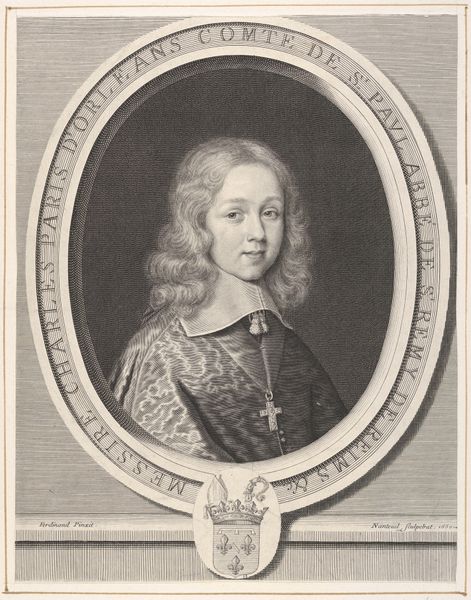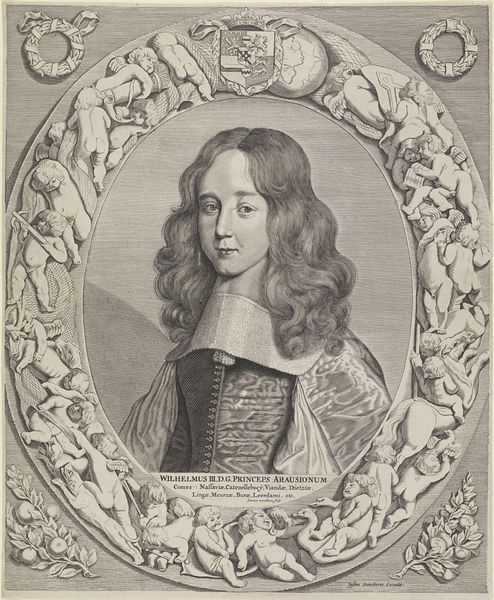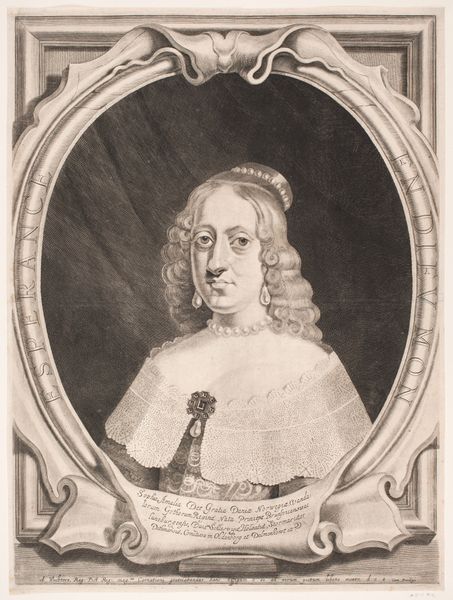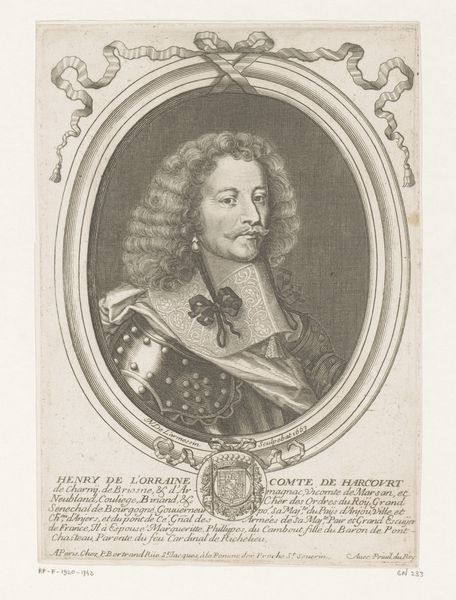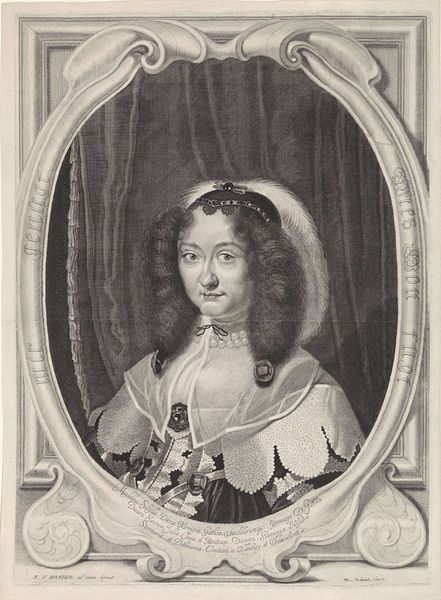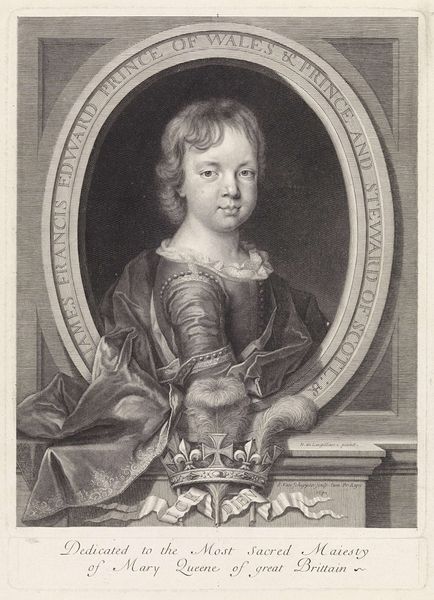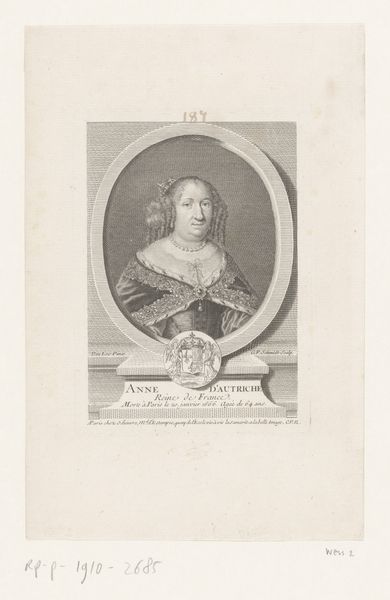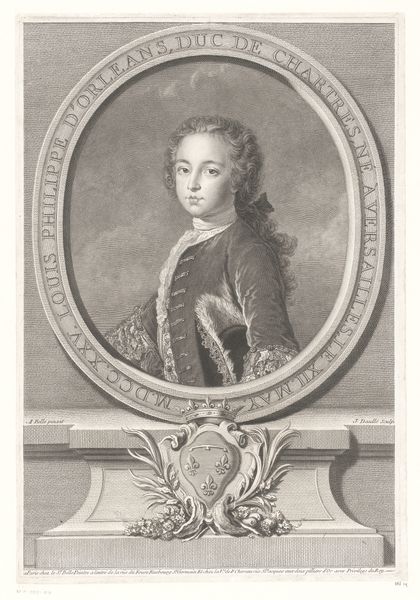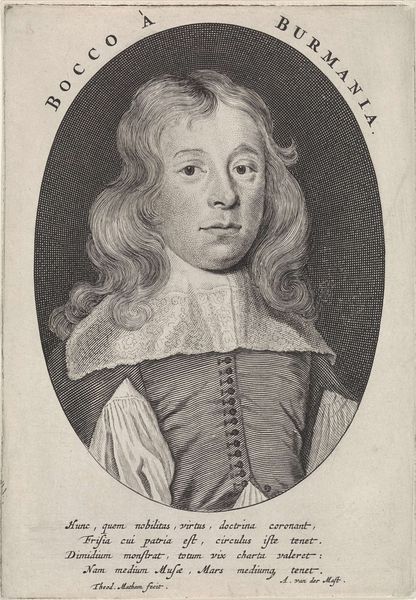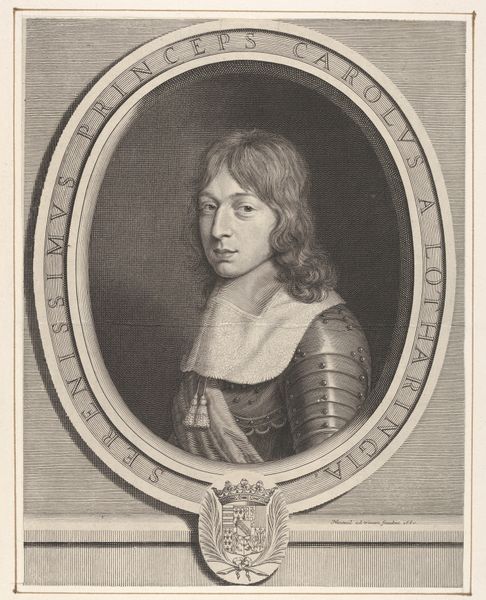
drawing, print, metal, etching, engraving
#
portrait
#
drawing
#
baroque
# print
#
metal
#
etching
#
engraving
Dimensions: Sheet: 12 1/2 × 9 5/8 in. (31.8 × 24.5 cm)
Copyright: Public Domain
Curator: This is "Charles d'Orléans-Longueville, Comte de Dunois," a print made around 1660 by Robert Nanteuil. The piece, which combines engraving and etching, is currently housed at the Metropolitan Museum of Art. Editor: He looks impossibly young! Almost melancholy, wouldn't you say? Framed within that oval like a precious jewel, though his eyes suggest he's not entirely buying into the pomp. Curator: Nanteuil was a master of portraiture in this period, and this work exemplifies the kind of visual language favored by the French aristocracy of the time. Portrait prints served an important function, disseminating images of power and status widely. Editor: So, spin doctoring with a burin and etching needle! Still, beyond the social function, the skill involved is breathtaking. Look at the delicate rendering of his hair, and the detail in his jacket, achieved through what is basically controlled scratching of a metal plate. Incredible! Curator: Absolutely, and Nanteuil was highly sought after for this ability to capture the likeness and status of his sitters. It’s fascinating how the proliferation of printed images like these coincided with and reinforced the solidification of social hierarchies. It wasn't just about making pretty pictures. Editor: It does feel like every curl, every button, is meticulously cataloged, and loaded with meaning. Makes you wonder what he actually *thought* about it all. The sheer artifice is mesmerizing though, a sort of frozen theatre. Curator: Exactly, the tension between the real person and the performance of social role. Consider the symbolism implicit within that coat-of-arms depicted beneath the central portrait—it functions less as a biographical note and more as another element that underscores noble lineage and dynastic ambitions. Editor: All very proper and...permanent, literally etched in metal! I'm still stuck on his eyes, they pierce that perfect surface a little, a human counterpoint in a world of symbolism and societal scaffolding. Curator: Indeed. The artistry showcased here provides us with invaluable insights into the era's sociopolitical context and artistic conventions. Editor: Yes, and it leaves one with such a potent sense of time – both meticulously preserved, and inescapably lost. Fascinating.
Comments
No comments
Be the first to comment and join the conversation on the ultimate creative platform.
